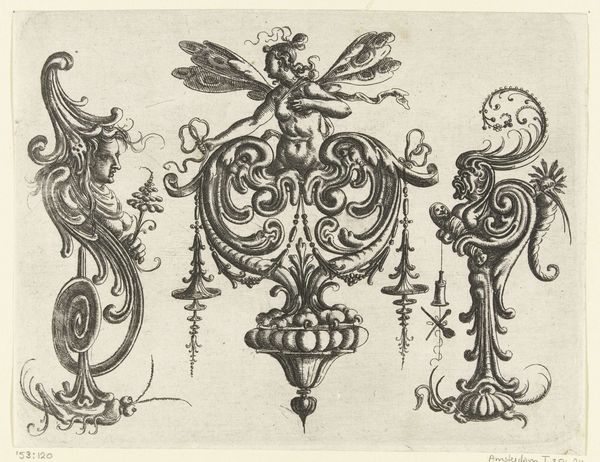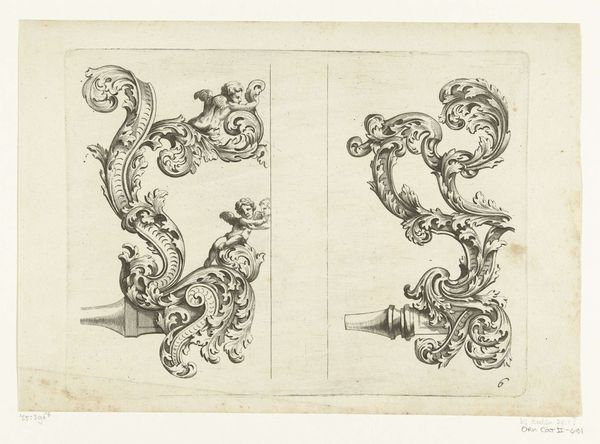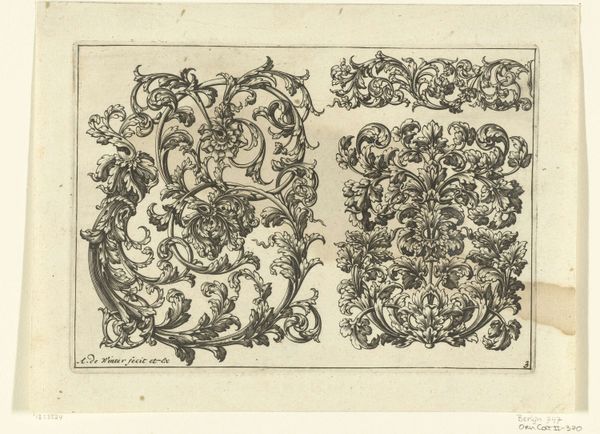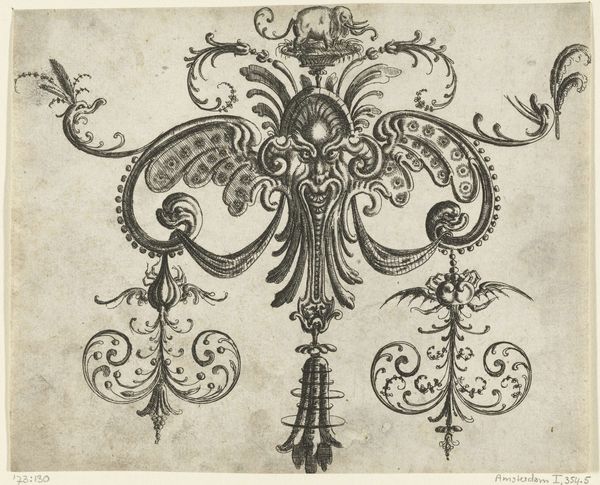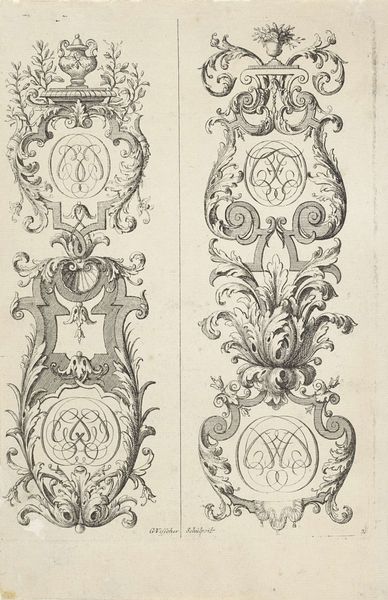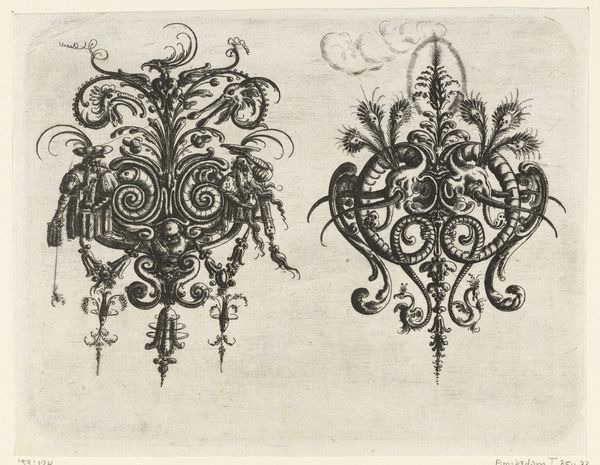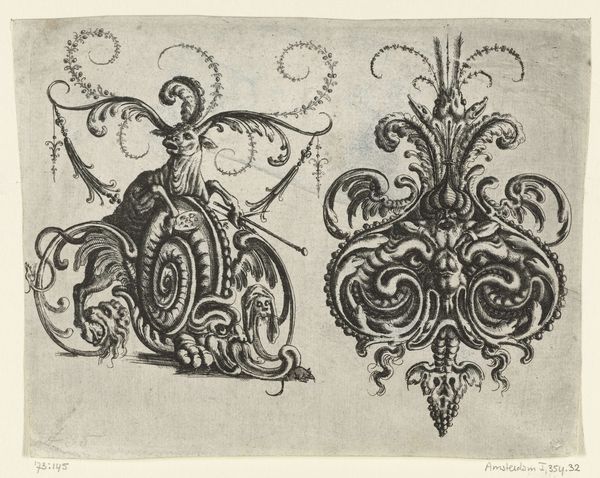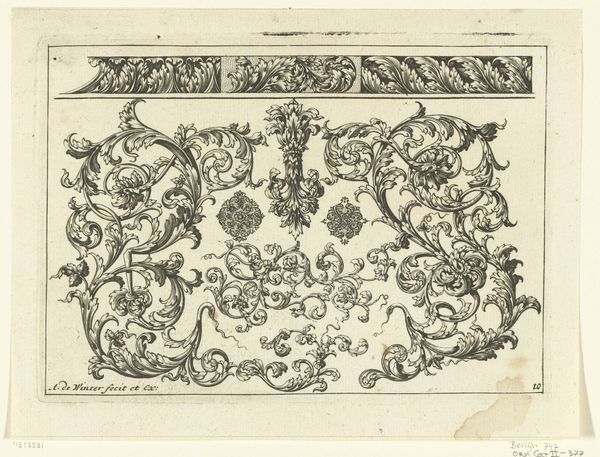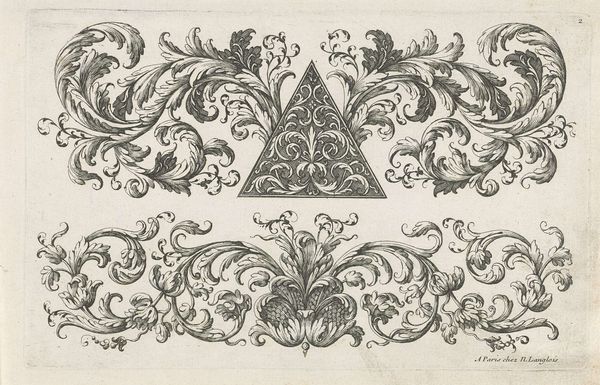
ornament, print, engraving
#
ornament
#
baroque
# print
#
line
#
decorative-art
#
engraving
Dimensions: height 128 mm, width 257 mm
Copyright: Rijks Museum: Open Domain
Editor: This print, titled "Twee juwelen in twee cartouches," dating from 1650 to 1709, by Daniel de Lafeuille, presents two quite intricate jewelry designs framed by foliage. It looks very ornamental. How would you interpret this work, particularly its material aspects and the context of its creation? Curator: As a materialist, my eye goes to the engraving process itself. Look at the labor invested in producing this print. The fine lines, the precise detailing–it speaks of a highly skilled artisan deeply engaged with their tools and materials. The "precious" jewels depicted are, in a sense, less interesting to me than the socioeconomic factors influencing this act of reproduction. Who was commissioning such prints? For what purpose? Editor: So, you're more interested in the "making" than the jewels themselves? Curator: Precisely. These designs are not just floating ideas, but commodities intended for a market. What materials and processes allowed for the rise of ornament as a means of expressing wealth in the baroque period? Editor: So it's less about appreciating pretty jewels, more about the labour, the marketplace for prints and possibly, influencing design? Curator: Exactly. The creation and consumption of these prints demonstrate a burgeoning consumer culture where ornament and display became increasingly important. Think about the availability of paper, the etching tools… These things inform the entire cultural context surrounding this image. Editor: That gives me a new perspective on how prints themselves are valuable material objects in a particular economic climate. Curator: It highlights the means of production and the networks that facilitated this creation, impacting both the elite and artisans who produced decorative works.
Comments
No comments
Be the first to comment and join the conversation on the ultimate creative platform.
